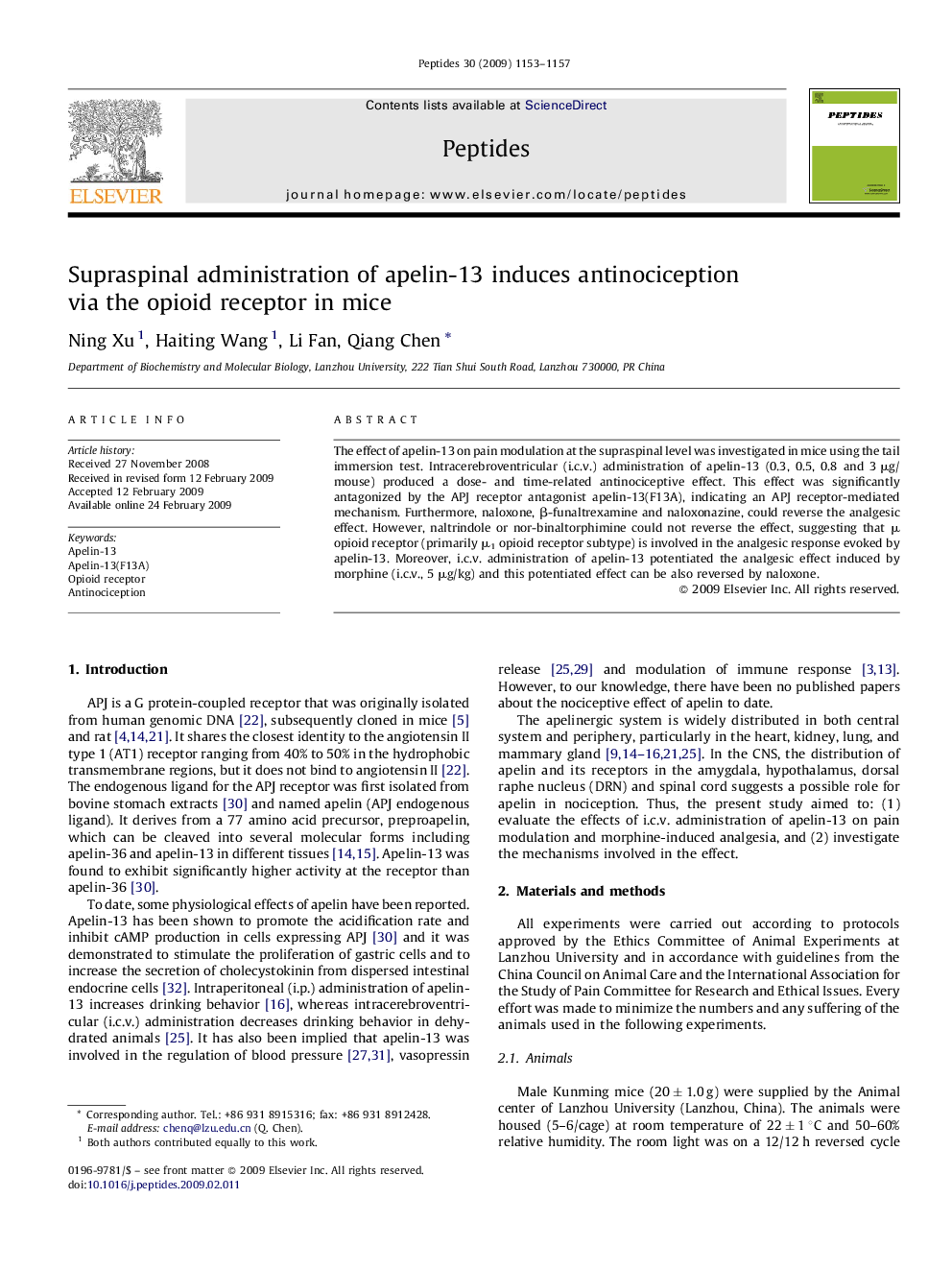| Article ID | Journal | Published Year | Pages | File Type |
|---|---|---|---|---|
| 2006858 | Peptides | 2009 | 5 Pages |
Abstract
The effect of apelin-13 on pain modulation at the supraspinal level was investigated in mice using the tail immersion test. Intracerebroventricular (i.c.v.) administration of apelin-13 (0.3, 0.5, 0.8 and 3 μg/mouse) produced a dose- and time-related antinociceptive effect. This effect was significantly antagonized by the APJ receptor antagonist apelin-13(F13A), indicating an APJ receptor-mediated mechanism. Furthermore, naloxone, β-funaltrexamine and naloxonazine, could reverse the analgesic effect. However, naltrindole or nor-binaltorphimine could not reverse the effect, suggesting that μ opioid receptor (primarily μ1 opioid receptor subtype) is involved in the analgesic response evoked by apelin-13. Moreover, i.c.v. administration of apelin-13 potentiated the analgesic effect induced by morphine (i.c.v., 5 μg/kg) and this potentiated effect can be also reversed by naloxone.
Related Topics
Life Sciences
Biochemistry, Genetics and Molecular Biology
Biochemistry
Authors
Ning Xu, Haiting Wang, Li Fan, Qiang Chen,
